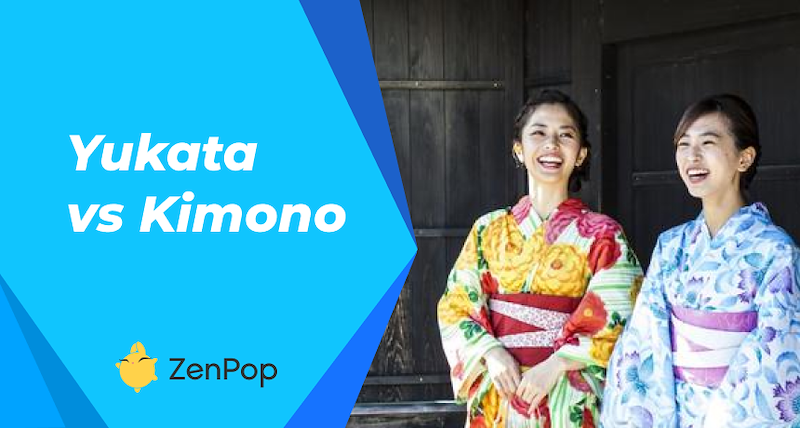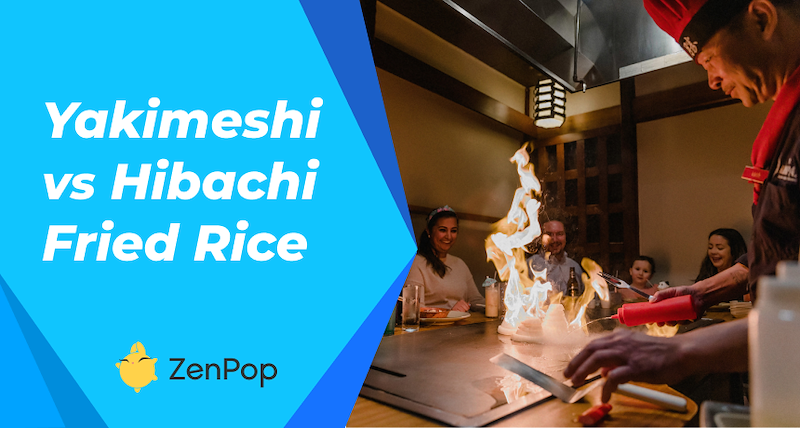
</title><meta name="robots" content="noindex"> Japanese Fried Rice: Yakimeshi vs. Hibachi
Different versions of fried rice are something you’ll find in Asia—and that includes the Japanese-style one. In the land of the rising sun, this type of cooked rice is called yakimeshi or 焼き飯. The first kanji means stir-fry and the second one means cooked rice.
The other name for yakimeshi is chahan (チャーハン). This is the country’s transliteration of the word chao fan (炒饭), which is Chinese-style fried rice. Although the locals use both terms, yakimeshi is typically cooked in a pan or griddle while chahan is cooked in a wok.
In the States, they both use the terms yakimeshi and hibachi fried rice. Both terms refer to Japanese-style fried rice. Today we’re going to learn about the differences between both dishes.
What's the difference between Hibachi and Yakimeshi?
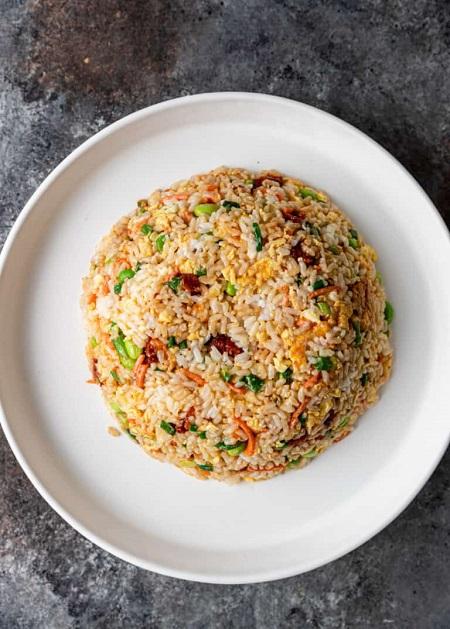
Yakimeshi is the general term for fried rice while hibachi fried rice uses a particular cooking style. But before we dive into nitty–gritty, we need to learn about the origins of the term “hibachi.”
What is hibachi?
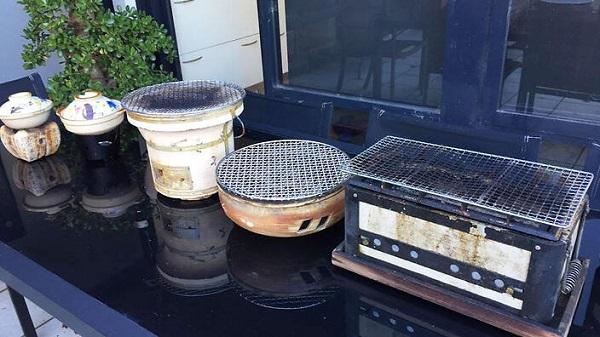
In the land of the rising sun, hibachi (火鉢), which means fire bow, is a traditional Japanese brazier that can hold burning coal. It came in different shapes such as box-shaped, cylindrical, open-topped, and round. The heating device was invented during the Heian period (between the years 794 and 1185).
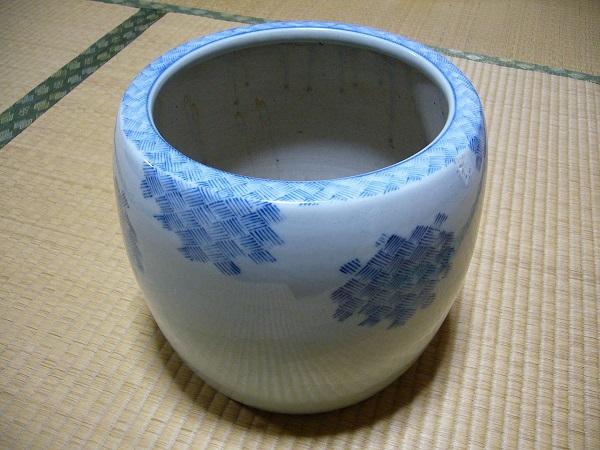
Originally, hibachi was used to heat rooms and boil tea. It was during the early 1900s when the Japanese began to use it for some cooking. Nowadays, the original hibachi can rarely be seen in the country.
The hibachi grill known in the USA is actually called shichirin (the kanji is 七輪, which literally means seven wheels), in Japan. Shichirin was incorrectly named and marketed as a hibachi grill in North America. Some of its variations still use coal. But its modern versions for indoor cooking are powered by electricity.
Now that we’ve discussed what the term hibachi means in Japan and the US, we’re pretty sure you’re wondering how fried rice can be cooked on this device.
Hibachi Fried Rice
The truth is, hibachi fried rice isn’t cooked using a hibachi grill. English-speaking people confuse the term hibachi-style with teppanyaki (鉄板焼き)—a Japanese style of cooking that uses an iron griddle to cook dishes. People easily confuse the names of these devices because both of them use an open flame.
Teppanyaki dishes in Japan include steak, yakisoba, okonomiyaki, yasai itame (stir-fried veggies), monjayaki, and more. The grill called teppan uses propane and is flat-surfaced. With its design, restaurant customers can watch their food being cooked in front of them.
In other words, the term hibachi fried rice is mainly used among English speakers. This kind of fried rice uses the teppanyaki style of cooking. Some people use hibachi and teppanyaki interchangeably. You won’t hear these word usages in Japan.
You can only find hibachi fried rice on the menu of teppanyaki/hibachi restaurants in the USA. You won’t see them in any food establishment in Japan.
You might want to get yourself a teppanyaki griddle if you want to cook hibachi-style fried rice along with your other favorite Japanese dishes. But the cooking device can be expensive, depending on where you’re from. If you and your family regularly cook a variety of Japanese food, go for a table-top or counter-top teppanyaki griddle.
Yakimeshi (Japanese Fried Rice)
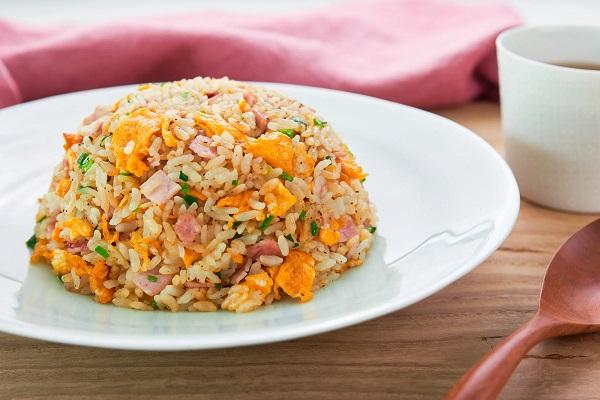
The typical yakimeshi is made of simple ingredients. It is a staple in Japanese households, especially since it uses leftover rice.
Yakimeshi is a dish that uses short-grain rice. In other countries, they use long-grain rice which does not stick together. Japanese rice tends to be sticky and chewy. They easily clump together too.
That’s why using day-old rice is the key to delicious Japanese-style fried rice. If you cook this dish with freshly cooked rice, you’ll end up with mushy fried rice — and that doesn’t sound too appetizing.
The fridge makes the rice hard and brittle. Once you take it out to cook yakimeshi, it’ll be easier to break it down into grains and then stir-fry it. The softness and stickiness of the rice will return once it’s cooked in oil with the rest of the ingredients.
Yakimeshi is also available as a takeout food. Most meat and veggies can be included in the yakimeshi that’s why it’s cheap to make.
When you’re too lazy to make dinner you can just whip up a simple yakimeshi using only bacon, veggies, egg, and rice. It’s an excellent dish for people on the go too!
Yakimeshi vs. Hibachi Fried Rice
If you think about it carefully, fried rice or yakimeshi can easily be cooked using a pan. On the other hand, you’ll need a teppanyaki griddle if you want to achieve hibachi-style fried rice.
As mentioned above, it’s easy to whip up yakimeshi at home. Hibachi fried rice, on the other hand, is a dish you can order in teppanyaki and hibachi restaurants.
In terms of ingredients, yakimeshi and hibachi fried rice are roughly the same. You will find eggs, meat, and vegetables in both dishes. The only real difference is the way they’re cooked.
There is no particular sauce used in yakimeshi and hibachi fried rice. The taste varies from one family to another and from one restaurant to another.
In other words, both rice dishes have different variations. Here’s a list of some common ingredients that dictate the flavor of yahimeshi and hibachi fried rice:
- Soy sauce
- Salt
- Miso
- Ketchup
- Beef
- Pork
- Sausage
- Seafood
- Japanese mustard green (takana)
Whether it’s yakimeshi or hibachi fried rice, the color will depend on the sauce and ingredients. But there’s one thing that you cannot deny about the two—they are packed with vegetables and meat.
Do you plan to make Japanese-style fried rice?
Simplicity is key whether you’re making yakimeshi or hibachi-style fried rice. Remember the most important thing: Both are rice dishes. So rice should be the dominating ingredient. Do not add too much vegetables or protein because you’ll end up overloading your dish.
Also, ensure that your pan or griddle has enough space for you to toss and turn the ingredients. This way, you can ensure that every grain gets cooked well.


